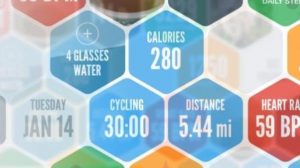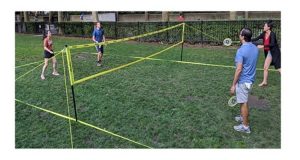
Running on Treadmill Vs Track: Know which option is better for Cardio. Learn about the pros and cons of each.
Though there are many in Mumbai who would love to jog on a track, traffic congestion and pollution are some of the factors which deter many from getting out of their homes or from gyms and exercising outdoors.
However, before you decide to skip that morning jog and go for a treadmill session, here’s what you should know. The constant change of terrain certainly makes outdoor running more interesting, but does it also benefit your workout?
Working the Muscles: Mixed Opinion
When you run outdoor, the terrain may change with each step, be it a smooth road, a pebbled street or a grass path. On a treadmill, however, there is only one surface: the belt.
“Outdoor running tends to be more strenuous than its treadmill version,” says New Delhi-based Kamal Chhikara, head coach at the Reebok CrossFit gym. “One reason is that the treadmill belt assists leg turnover, making it easier to run faster. Second, the different terrains and inclinations stimulate more muscle fibres and enhance your balancing power.” While running outdoor, a person’s pace varies, and so does his or her incline. In the case of a treadmill, however, you are the master of your own slope, and the belt is well cushioned and waxed. “Due to different terrains, you end up using your hamstring more to stride and maintain a pace, while on a treadmill you only use your quadriceps while running as you don’t need to maintain the movement of the surface,” says Vinod Channa, a Mumbai-based fitness trainer. Outdoor running makes one use quadriceps as well as hamstrings, “which in turn strengthen one’s core”, adds Channa.
New Delhi-based Zahid Shafi Dar, head trainer at the Greater Kailash-I branch of Gold’s Gym, an international chain of fitness centres, however differs. He explains that a good treadmill running session can work on each of these muscles. “For uphill running, you can incline your treadmill, you can have an intense running session and a slow bouncy walk, all the while being safe from injuries that might happen outdoors,” he says.
One factor that contributes to the difficulty level of outdoor running is wind resistance, which Channa says adds “2-10% of the runner’s workload, depending on the speed”. Kiran Sawhney, founder, owner and wellness trainer of the New Delhi-based gym Fitnesolution, says you can compensate for this by adding a 1% incline to the treadmill.
Impact on the Body: Treadmill vs Track
Better oxygen intake
Over the years, researchers have pointed out the benefits of exercising close to nature, using parks or pavements with trees around. “The first and the most obvious benefit is increased intake of oxygen,” says Chhikara. “It is caused due to increased flexing of muscles, which results in better energy levels and in turn benefits your running sessions.”
Avoid hard surfaces
For best results, he suggests running on sand: “You can alter your directions, you can run backwards on the sand and yet there won’t be any damage to the knees and joints.”
In contrast, hard floors are an absolute no-no. “Concrete floors have the highest impact on the knees,” says Prateek Gupta, consultant orthopaedic and sports surgeon, Sir Ganga Ram Hospital, New Delhi. Dr Gupta says that while running, almost four times the force with which we stride on the concrete floor hits back at our knee joints. “That’s why running on sand and on grass is best, while the treadmill belt is the best for people with joint problems,” he says, adding that as far as pollution goes, there is no escape. “It’s not like gyms have air filters. The air remains the same. Run in a park where there are a lot of trees (away from traffic) and high concentration of oxygen; it is more beneficial for your lungs and your workout.”
Which One Offers Better Workout Options?
There are different terrains and there are different running workouts, which include uphill and downhill running, reverse jogging, bouncing while walking, obstacle running, and using different strides. All this is possible while running outdoor, but can it be replicated on a treadmill?
“You can definitely incline your treadmill and try for a bouncy slow walk along with an intense running session,” says Dar. “But obviously there is no back-running, downhill jogging and side striding on a treadmill,” he adds.
According to Sawhney, however, these distinctions don’t matter as long as the end result is achieved through interesting workouts. “You can make specific programmes as per an individual’s specifics and burn the same amount of calories.”
Treadmill Gives Fitness Performance Chart
One argument constantly made in favour of a treadmill is that it allows you to keep count of the calories burnt while monitoring your heart rate. “Exercising is all about motivation and feedback. Having your performance chart in front of you helps you keep track of your fitness levels and stay motivated,” says Sawhney. But the absence of ways to verify the numbers on the machine (distance covered, calories burnt, etc.) poses a greater challenge. “Besides, there is no proper way for most treadmills to calculate the accurate heart rate unless they are really advanced or (set up) in hospitals,” says Channa. No wonder then that the many apps available to record heart rates and distance covered have become de rigueur for outdoor runners. Dar, though, believes that using a gadget while running is a “pain”.
Treadmill: Easy Availability & Flexibility of Exercise
One of the strongest reasons for the treadmill’s popularity is its easy availability and flexibility. “You don’t have to worry about your safety in terms of what time you run or that a car might hit you,” says Sawhney. The other benefit of treadmill running is that it is not affected by weather. “In India, it is anyways hot and humid and pollution is on the rise. This temperature variation can be deadly for a heart patient, while people suffering from diseases like asthma can be affected by the pollution,” says Dar. So, does the treadmill win over outdoor running? Dr Gupta does not think so: “Nothing is more beneficial for a human body than running/jogging or walking among the trees as the sun rises, and that too without paying any membership fee.” Dar says the grass and birds won’t tell you the best fitness plan. “Let’s accept the fact that most amateur runners don’t know their techniques, exertion levels, etc. When you go to a gym, you have the benefit of asking a trainer to formulate an exercise regime that will suit your body.” With opinion divided, how about the best of both worlds: the treadmill when it’s muggy and the outdoors when it’s not?
Source: livemint.com









Leave a Reply